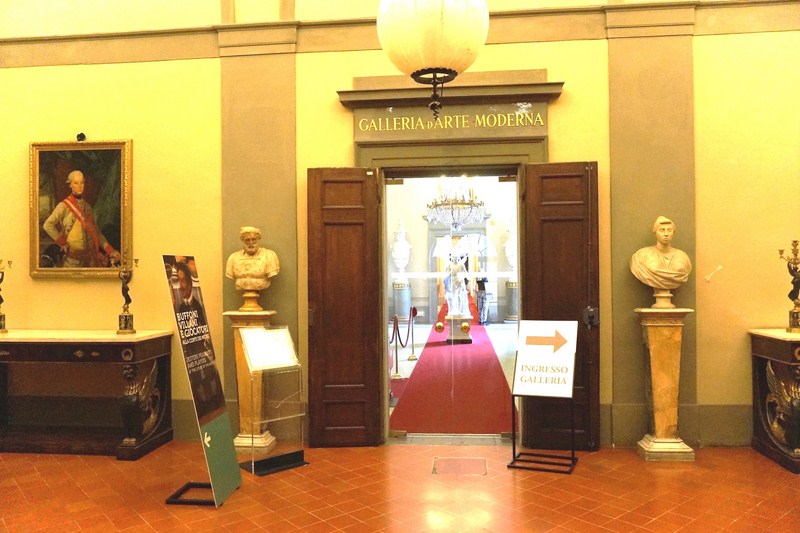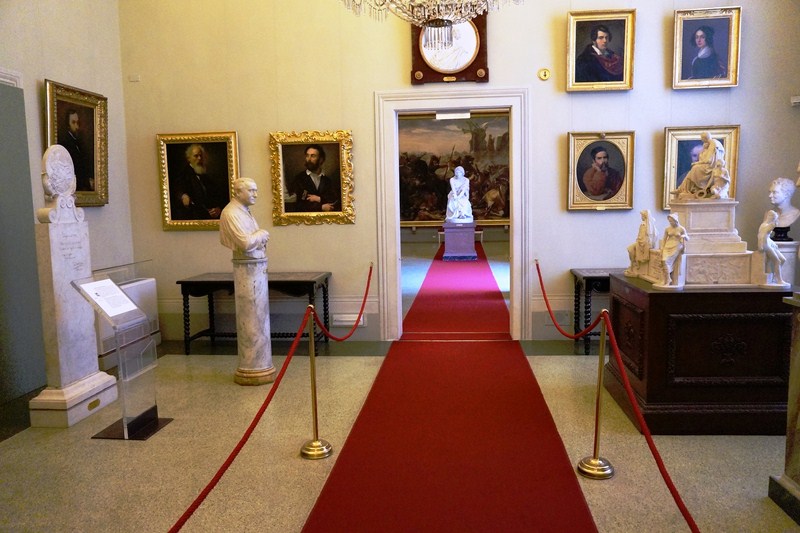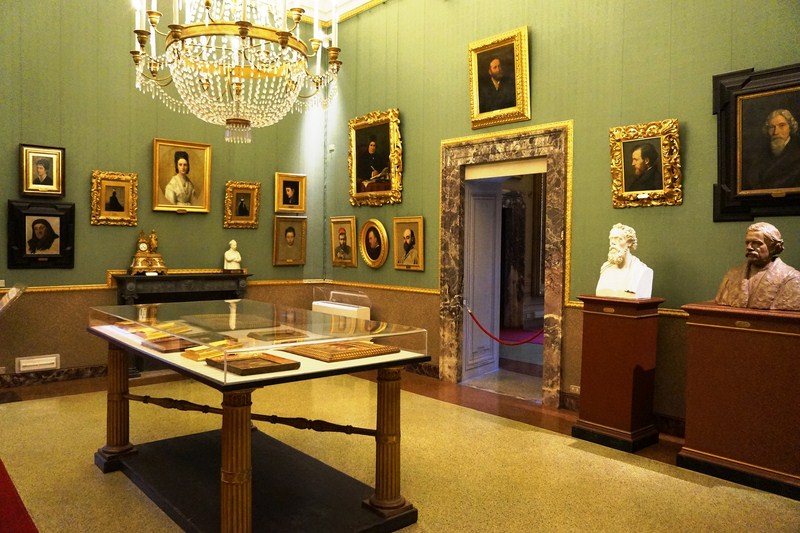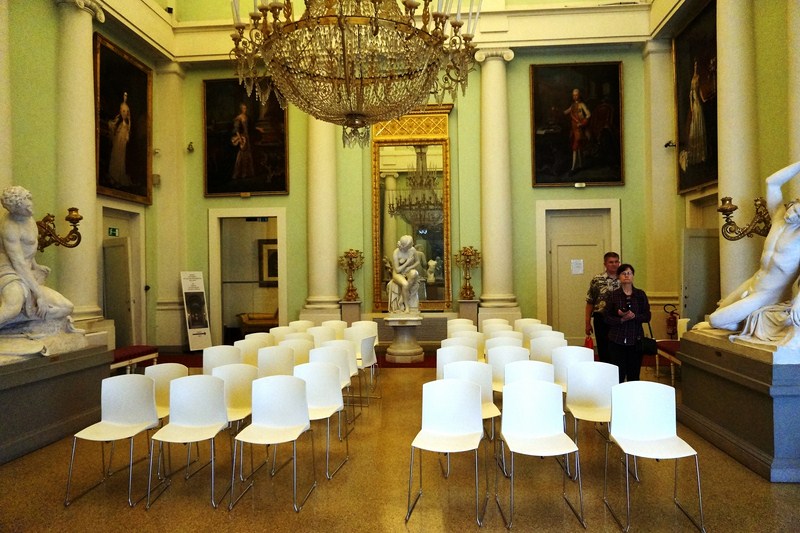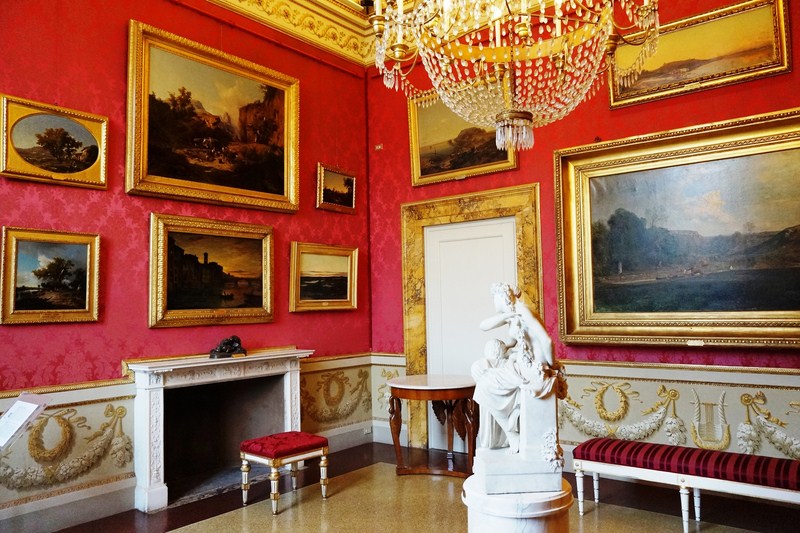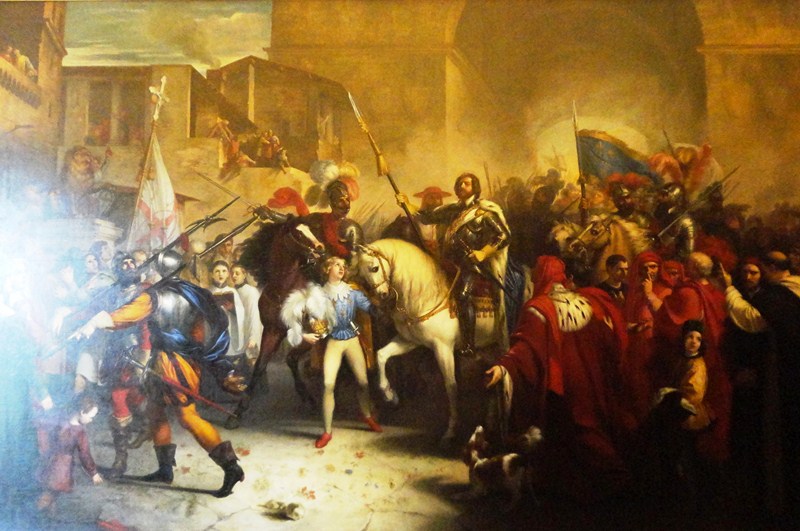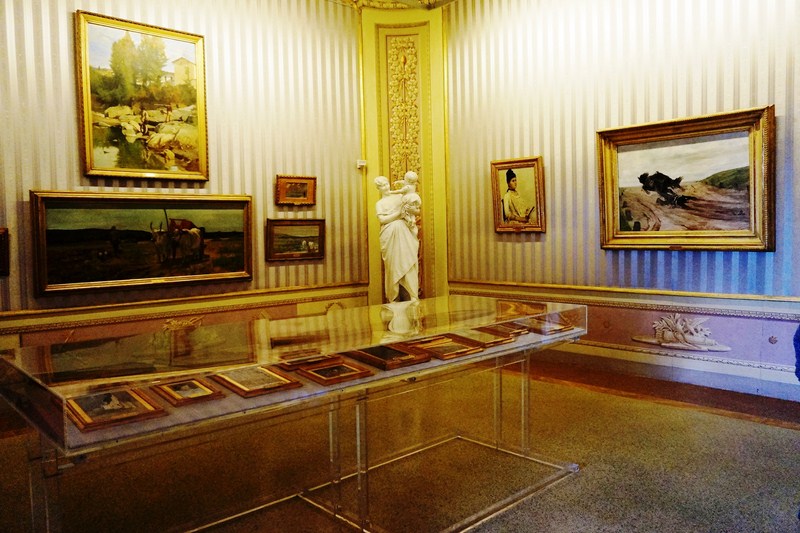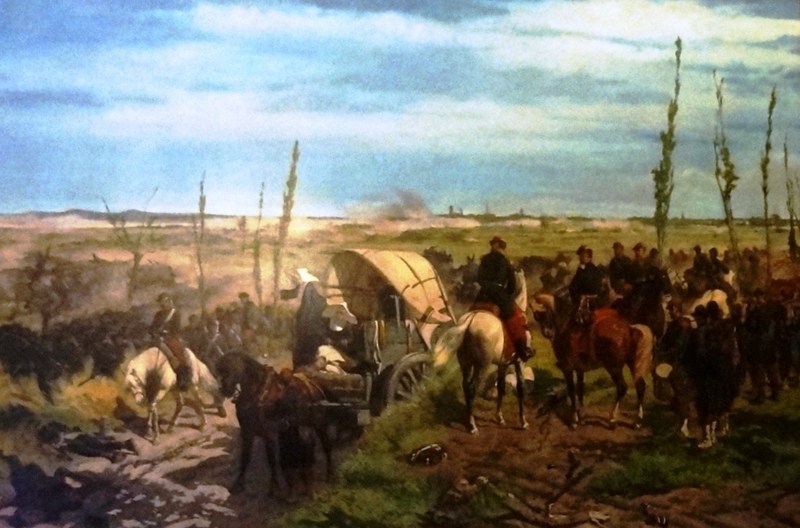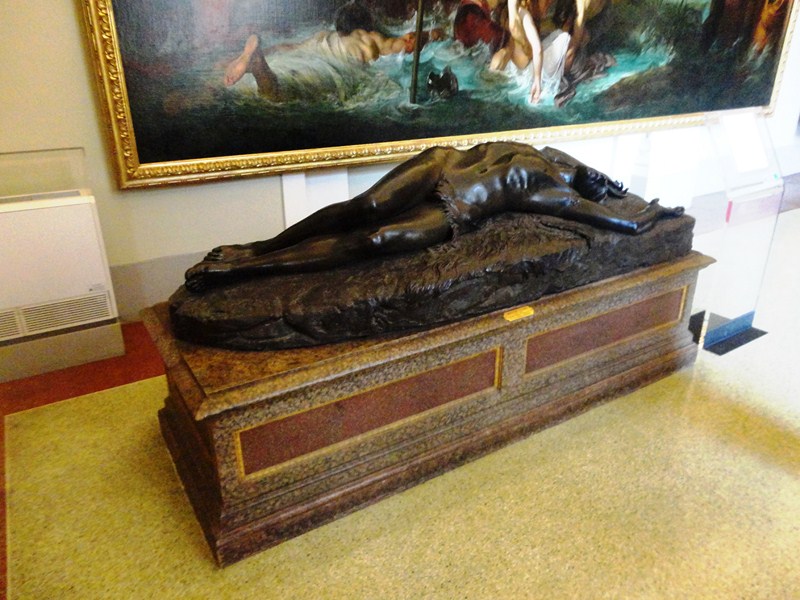The Gallery of Modern Art, housing one of the most important and complete collections of early and late 19th century and early 20th century Italian paintings, occupies an impressive 30 rooms on the second floor (opened to public viewing since 1924) of the Palazzo Pitti once inhabited by the Habsburg-Lorraine family from which there is a magnificent view over Florence and the Boboli Gardens. It extends as far as the rooms and the facade used by the for the palace library and the side wings used for children and retainers.
Founded in 1914, it initially comprised the Grand Ducal paintings of modern art, complemented by further modern works of art in the ownership of both the state and the municipality of Florence, brought in from the Academy of Fine Arts. The sumptuous rooms, furnished in the first half of the 19th century with frescoes, stuccoes, and period furnishings, constitute a perfect setting for the works.
Recently, these rooms have been reorganized, according to chronological criteria that trace a wide chronological arc. Though the rooms on the second floor have been restored, the decoration, upholstering and furniture of the Lorraine period have been maintained. Great informative materials are available in each room.
To some, the title “Gallery of Modern Art” may sound incorrect, as the art in the gallery covers the period of time going from Neo-Classicism (the age of Peter Leopold) up to the First World War to the 1920’s and no examples of later art are included in the collection. In Italy, “modern art” refers to the period before World War II. What follows is generally known as “contemporary art” (arte contemporanea) which, in Tuscany, can be found at the Centro per l’arte contemporanea Luigi Pecci at Prato, a city about 15 kms. (9 mi.) from Florence.
The tour of its current large collection, still being added to through donations and purchases, is arranged in multiple, overlapping rows and organized in chronological order and by historical-topical category. It attempts to furnish visitors with a clear view of the history of the various core collections, enabling a correct reading of the diverse atmospheres, marked as they are by the personal tastes of the royal families alternating in their reigns. Today, due to a convention signed by the Italian State and the Municipal Administration of Florence, it has a very special juridical nature.
Our chronological journey began with the movements of the early 1800s, with artworks from the Neo-Classical (like the Oath of the Saxons to Napoleon by Pietro Benvenuti), to Purism and the Romantic (like the grandiose Entry of Charles VIII into Florence by Giuseppe Bezzuoli or The Two Foscari by Francesco Hayez).
Also included is a vast assortment of paintings of modern Italian schools of the late 19th and early 20th centuries, based on historical subjects that document one of most significant aspects of the first half of the 19th century culture. These comprise works by Luigi Sabatelli, Enrico Pollastrini or by Stefano Ussi with his famous The Expulsion from Florence of the Duke of Athens.
The 19th-century itinerary concludes with works of Symbolist and Divionist movements. Among the various works on display include many paintings of views and interior scenes by the delicate Silvestro Lega and the vigorous landscape painter Telemaco Signorini, a series of his rapid and elegant portraits by Giovanni Boldini, plus other works by Giorgio Morandi, Francesco Hayez, Camille Pissarro, Filippo de Pisis, Carlo Carra, Giorgio de Chirico, M. Rosso and Plinio Nomellini and futurist avant-garde works.
In addition to the above-mentioned collections, the Gallery also displays a lavish collection of 19th century works arranged in the so-called Mezzanine of the Eyes (Mezzanino degli Occhi, the “eyes” being windows in the shape of a circle).
However, the paintings that most characterize the Gallery are those of the Macchiaioli movement (starting at Room 17), a school of famous Tuscan artists of the mid-19th century, led by Giovanni Fattori, who are early pioneers and the founders of the Impressionist movement that set out the premise for a wide-scale innovation at a national level. Many of the works of these artists displayed in the Gallery belong to the collection of Diego Martelli, a critic, gallery owner (who went back and forth between Florence and Impressionist Paris) and friend of the Macchiaioli who left their paintings to the museum at the end of the last century.
This section comprises important works by Giovanni Fattori such as the small and beautiful panel Rotonda at Palmieri, the Italian Camp at the Battle of Magenta, and the Lo Staffato plus a rich series of landscapes and scenes of life in the Maremma such as the Market San Godenzo in Maremma (1887), the Ox Cart in the Tuscan Maremma, and the Sheep’s Jump (Il Salto delle Pecore, 1887).
Within the same period are many fine sculptures such as the Calliope of Antonio Canova, Psyché by Pietro Tenerani and the famous Abel Defeated by Giovanni Dupré.
The sculptures of Adriano Cecioni, lucidly translated and experimented with the tonal ideas prevalent to whom the touch was so important. You can also visit the apartments of the Duchess of Aosta, with the original furnishings that belonged to the Savoia family.
Gallery of Modern Art: Second Floor, Palazzo Pitti, Piazza de’ Pitti 1, 50125 Florence, Italy. Open Tuesdays to Sundays, 8.15 AM to 6.50 PM. Closed: Mondays, New Year’s Day, May 1 and Christmas Day. Admission: € 8.50 (full price), € 4.25 (reduced). Free admission: children under 6 years old, disabled people and their helpers, authorized tour guides and leaders, teachers accompanying school groups. The ticket is also valid for the entrance to the Palatine Gallery. The ticket office closes at 6.05 PM and closing operations begin 6.30 PM.
How to Get There: Take the C3 or D bus to the Pitti stop.

